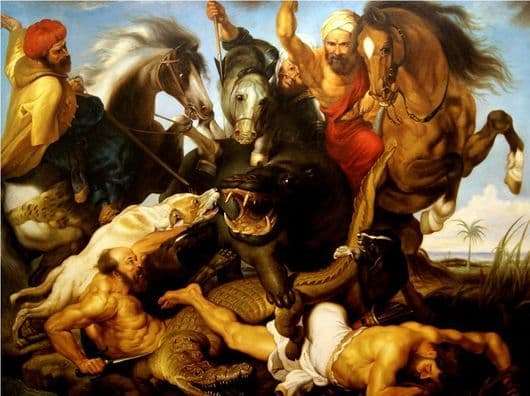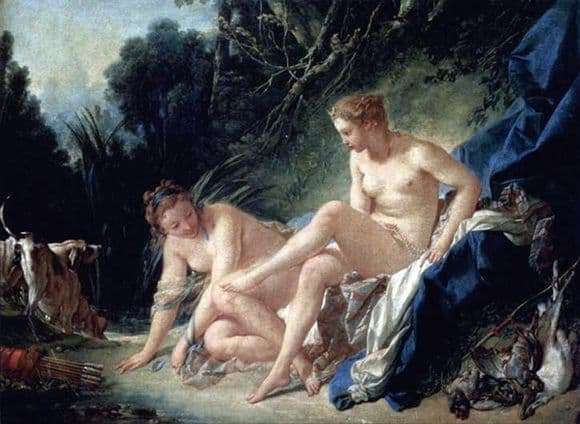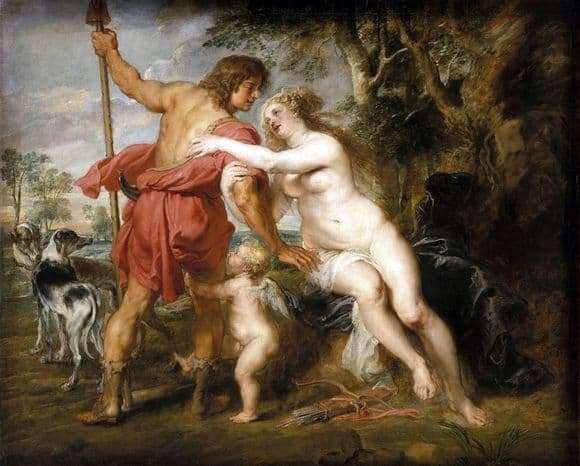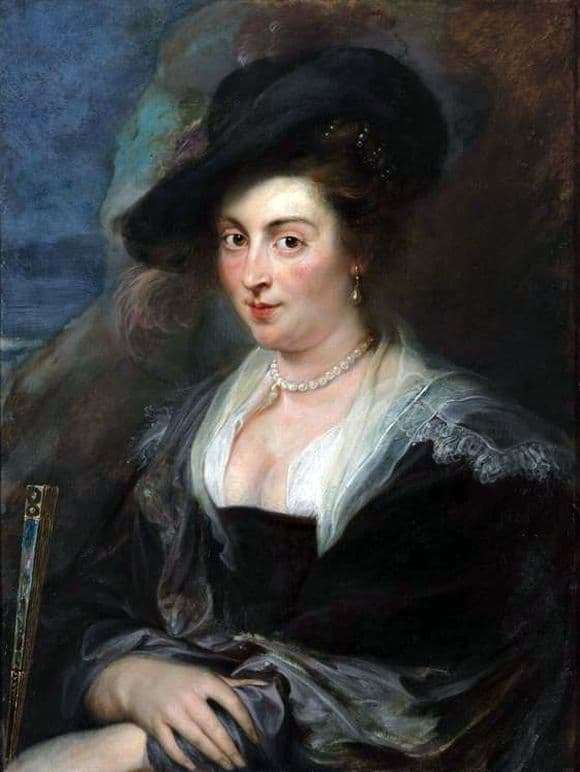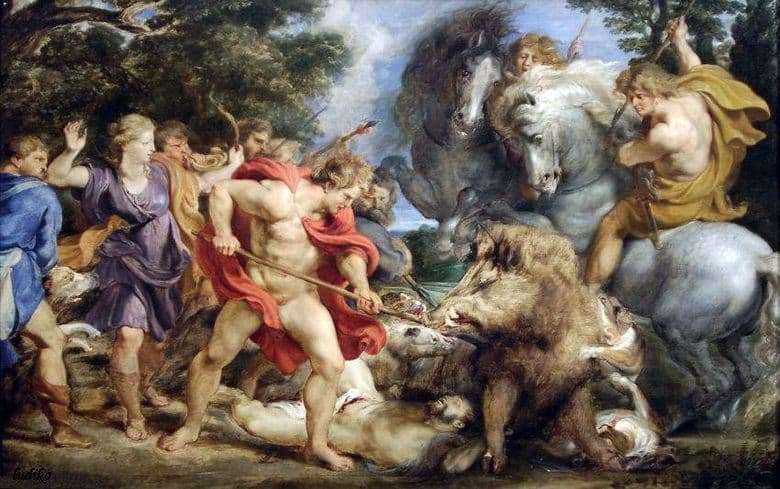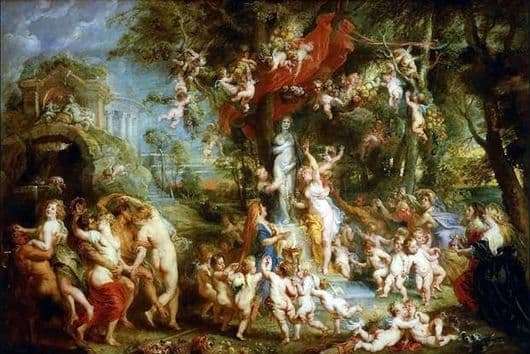
Rubens preferred to paint on various plots of ancient times. Particularly attracted his goddess Diana. The fact is that the myth about her connected at once two topics. One of them is hunting. At that time, only the privileged strata of society could hunt. The artist created a series of large paintings.
If in other canvases Rubens seeks to convey the entire intensity of the struggle. Here the artist tried to give maximum attention to the beauty of this goddess. We see Diana and her companions. They stand in front of the satyrs. If Diana protects the purity of women, satire become the epitome of a true orgy. These two worlds are sharply delimited by the spear of the goddess.
The appearance of these groups is completely different. Satires are wild creatures with goat legs. Diana radiates beauty. Her companions are just as gorgeous. They become the true embodiment of feminine charm and magnificence. Satires offer a huge amount of fruit. By this they hint that they will soon make excellent wine.
Diana killed a hare and birds while hunting. These animals personified sensual pleasure. By this, Rubens symbolically conveys the complete denial of all kinds of pleasures that satires are trying to offer. Diana and her companions will not succumb to this temptation.
The artist masterfully uses paints. He managed to convey all the beauty of a magnificent female body. He does not stint on bright colors. The whole picture is impressive volume strokes and realistic images. It seems that before us is not a goddess, but simply very beautiful women.
In those days it was popular to paint a picture of several artists at the same time. So here fruit and animals are depicted by another artist.
Impresses so colorful picture. It allows us to imagine what ideas of beauty existed during the time of Rubens.
Description of the painting by Peter Rubens “Return of Diana from the hunt”
